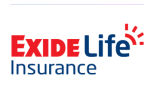Why Should You Consider Claims Paid Ratio In Your Life Insurance Decision?
Life insurance is one of the most crucial financial decisions you will make. It will assure your family of continued financial soundness in your absence. Yet, among all options, it can be very difficult to select the right policy. One of the most important parameters one can follow during the insurance provider assessment is the claims paid ratio. This ratio is an indicator of not only an insurer's financial standing but also its track record in paying insurance claims. The higher the claims paid ratio, the more committed the insurer is toward its policyholders. A higher ratio also assures policyholders of timely help.
Understanding the claims paid ratio will help in the selection of the ideal life insurance provider. It affirms that the insurer can meet their obligations, thus ensuring your loved ones have the requisite funds available to stay secure in business at that moment. Let us elaborate on this crucial metric and explore why this should be of great influence on your decision-making, especially if you are looking for an insurance company with the highest claim settlement ratios in life insurance.

What is a claims paid ratio?
The claims paid ratio indicates the percentage of total claims an insurance company has paid out compared to the premiums collected. It is calculated using the formula:
Claims Paid Ratio = (Total Claims Paid in terms of amount / Total Claims Received in terms of amount) × 100
Here,
Total claims paid = Refers to only the claims that have been approved and paid out.
This is an indication of the amount paid.
For instance, if an insurer receives ₹100 crore in claims and pays out ₹90 crore in claims, its claims paid ratio is 90%. A higher ratio usually indicates an insurer’s ability to meet its obligations. The ratio is a measure of whether the insurer fulfills its promise to policyholders by focusing on payout efficiency.
Claims Paid Ratio vs. Claim Settlement Ratio vs. Incurred Claims Ratio
Although these terms are sometimes used interchangeably, they are measuring different aspects of an insurer’s performance.
Claim Settlement Ratio (CSR) measures the percentage of claims an insurance company settled with respect to the total number of claims submitted within the prescribed period. It is calculated using the formula:
CSR = (Number of Claims Settled / Number of Claims Received) × 100
Here,
Claims settled = Includes both claims paid (approved) and claims rejected.
This is an indication of the number of claims settled.
Incurred Claims Ratio (ICR) is the percentage of claims an insurer pays compared to the total premiums they took in over a particular financial period. It is calculated using the formula:
: ICR=(Total Premiums Earned/Total Claims Incurred)×100.
Understanding these differences is essential to making informed decisions:
|
Feature |
Claims Paid Ratio |
Claim Settlement Ratio |
Incurred Claims Ratio |
|
Focus |
Monetary value of claims paid vs. premiums |
Number of claims settled vs. claims received |
Claims paid plus outstanding claims vs. premiums |
|
Calculation |
(Total Claims Paid / Premiums Collected) × 100 |
(Number of Claims Settled / Claims Received) × 100 |
(Total Premiums Earned/Total Claims Insured) × 100 |
|
Indicates |
Financial strength and ability to pay claims |
Efficiency in processing and approving claims |
Utilization of collected premiums for claim payments |
Limitations of Claim Settlement Ratio (CSR):
- Focus on Quantity, Not Quality: With CSR, companies can measure the number of claims settled but do not account for the value of the claim. That means insurers might prioritize settling a larger number of small claims, which could improve their image and attract new customers, rather than focusing on a smaller number of large claims that could be more financially beneficial in the long run.
- No Insight Into Claim Processing Time: CSR doesn’t say how long it takes to process and settle claims. While a high CSR with long processing times may cause stress to policyholders, it is still worth it.
- Lack of Financial Context: CSR does not refer to the financial health of an insurer. Even if you have a high CSR, there’s no guarantee that the company will have the finances to meet long-term obligations.
Limitations to Incurred Claims Ratio (ICR)
- Short-Term Perspective: ICR provides a snapshot of claims paid within a specific period, without offering a comprehensive view of the insurer’s overall financial strength.
- Ignores Future Liabilities: ICR does not assess how capable an insurer is of paying future claims or meeting ongoing obligations, which are of import for long-term policies.
- Potential for Misleading Comparisons: Differences in policy portfolios cause ICR comparisons between insurers to be distorted. For instance, let's say that insurers offering high-risk policies naturally have a lower ICR.
Let’s say Insurer A settles 95 out of 100 claims (95% settlement ratio) and is focused on lower-value claims, and Insurer B settles 90 out of 100 claims (90% settlement ratio) and has a larger monetary payout. In this case, Insurer B would have a higher claims paid ratio, reflecting its financial commitment. An understanding of this distinction helps an insurer show what it is financially capable of and focused on as a potential policyholder.
Significance of Claims Paid Ratio
Indicator of Insurer's Reliability
A high claims paid ratio indicates that the insurer is financially sound and prioritizes claim settlements. That builds trust among policyholders that if they have a family in danger, they will be taken care of. It's a manifestation of the insurer's ability to manage the risk and the insuring discipline of the insurer.
Reliability is important in the insurance sector. It’s horrible to imagine how many years of premiums are paid only to have your claim rejected when you need it. A high claims paid ratio minimizes this risk, reinforcing the insurer’s commitment to fulfilling its obligations. When it comes to long-term, sustainable security for their families, this is a deciding factor for people.
Impact on Policyholder Trust
There’s confidence when the insurer always pays on time. Just as you’d trust a bank with a proven track record, choosing an insurer with a high claims paid ratio ensures peace of mind. A smooth claim process and reduced uncertainties for the policyholders are made possible by trust in the insurer.
If they can’t be transparent and perform consistently, then policyholder trust cannot be built. When an insurer demonstrates a high claims paid ratio year after year, it sets itself apart as a dependable choice. Now more than ever, this trust is important, as it gives families one less thing to worry about.
Correlation with Financial Stability
Insurer’s financial stability is crucial for long-term policies. A consistently high claims paid ratio signals that the company is well-managed and capable of meeting future liabilities, even in challenging economic conditions. This becomes a cornerstone as an insurer’s measure of how sustainable and how viable the company would be in the long term.
Paying claims is just part of financial stability. It reveals whether the insurer can respond to the market changes, control risks, and invest in interesting solutions. For the policyholders, this means that they get a reliable means for protection of their investment for a long time to come.
How Claims Paid Ratio Affects Policyholders
Assurance of Claim Settlement
A high claims paid ratio ensures policyholders that their claims are more likely to be honored promptly. It’s especially important during emotionally and financially stressful times. The families of those who lost a loved one should not have to go through the additional hurdle of finding out if they can get access to the promised financial support.
The ease of claims process also is assured to enable a settlement of claims. Insurers with high claims paid ratios often have streamlined procedures, reducing the burden on families during difficult times. In the most efficient way, this means that cases are resolved more quickly, allowing for the return of the beneficiaries to work on healing and starting a new life.
Influence on Premium Rates
While not a direct correlation, insurers with high claims paid ratios may offer competitive premiums due to efficient claims management. It provides policyholders with better coverage at lower cost. In addition, financially stable insurers often adopt a transparent premium structure, which assures long-term affordability for their customers.
Another thing to look at is what value for money the premiums are providing policyholders. A high claims paid ratio indicates that the insurer is using its resources efficiently, offering comprehensive coverage without unnecessary cost increases. This balance is crucial for individuals seeking both affordability and reliability in life insurance claims paid ratio analysis.
Role in Policy Renewal Decisions
Policyholders often evaluate an insurer’s claims paid ratio before renewing policies. A high ratio, which does not change much over time, is a good sign because it encourages going on with the same provider. It also represents the insurer’s ability to protect its image and provide service to customers well.
Renewal decisions are influenced by multiple factors, but the claims paid ratio often takes precedence. The consistency shows that a high ratio over several years is a sign of steady (consistent) performance, which is good news for the policyholder; they trust that their insurer is indeed okay. Consistency among the decisions eases the decision yet encourages long-term partnership between the insurance provider and its clients.
How to Evaluate Claims Paid Ratio
Accessing Insurer’s Claims Data
Claims paid ratios are typically published in an insurer’s annual financial reports or by regulatory bodies like the Insurance Regulatory and Development Authority of India (IRDAI). For instance, annual reports of the IRDAI 2022-23 show the insurer claim performance. This data is regularly reviewed to keep members of the policyholders up to speed on insurer performance.
Comparing Across Insurers
When evaluating policies, compare claims paid ratios across multiple insurers. It assists in filtering out those providers who have records to avoid losers, thus making informed decisions. Comparative analysis reveals insurers that consistently beat industry standards, helping policyholders better position themselves in the seat of selecting insurers.
This comparison also gives a better picture of the market condition. By identifying top performers, policyholders can narrow down their choices to providers that align with their specific needs and expectations, especially when aiming for the highest claim settlement ratio in life insurance. Find out more about life insurance companies here.
Considering Industry Benchmarks
Many potential policyholders ask, What is the highest claims paid ratio in life insurance in India? In India’s life insurance sector, the FY2022-23 average claim settlement ratio was 98.45%. By comparing an insurer’s performance against such benchmarks, we are able to help identify reliable providers. Benchmarks have also become a litmus test for evaluating new and emerging insurers and the extent of their ability to compete with incumbents.
Similarly, understanding what the industry benchmarks are also helps to understand across the broader insurance industry. It sheds light on where change could come from and where policyholders can act proactively. Individuals will align themselves to industry standards to be certain that they’re getting the best options available.
Limitations of Claims Paid Ratio
Does Not Reflect Claim Processing Time
While the claims paid ratio highlights financial stability, it does not account for the time taken to process claims. Delayed settlements can be hugely stressful to beneficiaries, and claim processing efficiency should be evaluated. Finally, policyholders can also find out how long on average the settlement would typically take.
Processing time is a critical factor that complements the claims paid ratio. Despite a substantial ratio, delay to support still may lose the benefit of timeliness. Insurers with better balance on both metrics are more committed to their customers.
Potential for Misleading Comparisons
Different insurers cater to varying risk profiles and policy types, which can affect their claims paid ratios. Comparisons are done between providers with similar portfolios in order to eliminate potential differences. For instance, pure high-risk insurers might inherently report lower ratios than those that deal with standard products.
Policyholders should exercise caution when interpreting these ratios. Understanding the context behind the numbers means smarter decisions, preventing reliance on misleading comparisons. This approach encourages a larger appreciation given to the complexities involved in claim assessments while facilitating service delivery.
Importance of Considering Other Factors
The claims paid ratio is one of many metrics to consider. Choosing the right insurer isn’t just about policy features; we also consider other factors like customer service and the claim processing time. In addition, policyholders should review testimonials and reviews for an insurer to get a holistic idea of an insurer’s strengths and weaknesses.
A balanced perspective is taken, considering more than one factor. It discourages the single metric reformation, as these decisions are based on many factors and priorities that correspond to your need. This holistic method improves the user experience of every aspect of life insurance investments.
Conclusion
The claims paid ratio is a critical metric for assessing an insurer’s reliability and financial strength. What it does is very invaluable, as it offers the insurer insights into whether he can pay his obligations and thereby ensure that policyholders have peace of mind. So considering this ratio and other necessary factors, people can make a sound decision on what life insurance needs they may have. Choosing a provider with a strong claims paid ratio ensures that your loved ones receive timely and adequate financial support, safeguarding their future in your absence.
To make the most of your life insurance investment, evaluate claims paid ratios in conjunction with industry benchmarks, customer reviews, and policy features. Get expert guidance and personalized recommendations here on InsuranceDekho today.




























































